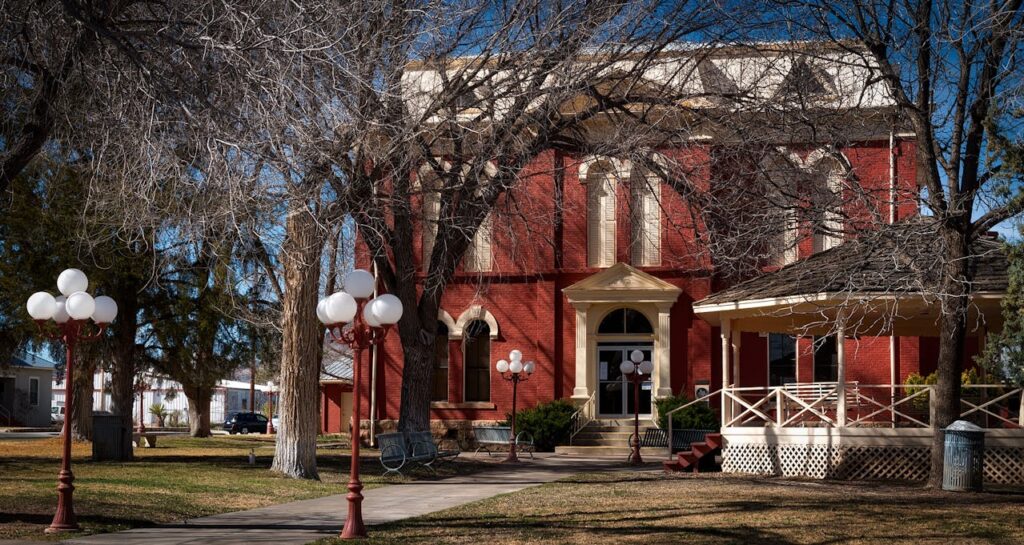What Is The Average Monthly Cost Of A Nursing Home In Texas?
The average monthly cost of a nursing home in Texas is around $5,125 for a semi-private room and approximately $7,000 for a private room. However, these figures can vary widely depending on location, type of care, and facility amenities. In major urban areas like Houston, Dallas, and Austin, prices tend to be higher-with private room costs often exceeding $9,000 per month.
Key factors that influence nursing home pricing include:
Level of medical or personal care required
Facility features (e.g., rehabilitation services, private suites, recreational programs)
Geographic region (urban areas typically cost more than rural settings)

As the population of seniors in the United States continues to grow, more families are faced with the decision of finding suitable living arrangements for their elderly loved ones. Texas, with its diverse culture, warm climate, and variety of amenities, has become a popular destination for senior living. However, the cost of senior living can vary significantly depending on the type of care needed and the specific location within the state. This article will provide a comprehensive overview of the average costs of different types of senior living in Texas, including independent living, assisted living, memory care, and nursing homes.
Independent Living
Independent living is ideal for seniors who are relatively healthy and can manage most of their daily activities but prefer a community setting with additional amenities. These communities typically offer a range of services, including meal plans, housekeeping, transportation, and social activities.
Average Cost: The average monthly cost for independent living in Texas ranges from $1,500 to $3,500. This wide range is due to factors such as location, the size of the apartment, and the level of amenities offered. For example, independent living communities in major cities like Houston, Dallas, and Austin tend to be more expensive than those in smaller towns or rural areas.
Assisted Living
Assisted living facilities are designed for seniors who need help with daily activities such as bathing, dressing, and medication management but do not require the intensive medical care provided by nursing homes. These facilities offer a supportive environment where residents can maintain a level of independence while receiving the assistance they need.
Average Cost: The average monthly cost for assisted living in Texas is approximately $3,750. However, this cost can vary based on factors such as location, the level of care required, and the amenities offered. In urban areas like San Antonio and Fort Worth, prices can be higher, reaching up to $5,000 per month, while in more rural areas, the cost may be closer to $2,500.
Memory Care
Memory care facilities specialize in providing care for seniors with Alzheimer’s disease, dementia, and other memory-related conditions. These facilities are equipped with specially trained staff and secure environments to ensure the safety and well-being of residents.
Average Cost: The average monthly cost for memory care in Texas is around $5,000. This cost reflects the specialized care and additional security measures required for residents with memory impairments. As with other types of senior living, prices can vary based on location and the level of care provided. In metropolitan areas, the cost can be as high as $7,000 per month, while in less populated areas, it may be around $3,500.
Nursing Homes
Nursing homes provide the highest level of care for seniors, including 24-hour medical supervision, skilled nursing care, and assistance with all daily activities. These facilities are designed for individuals with severe health conditions or disabilities who require constant medical attention.
Average Cost: The average monthly cost for a semi-private room in a nursing home in Texas is about $5,125, while a private room can cost around $7,000 per month. The cost of nursing home care can vary significantly based on the location, with urban areas typically being more expensive. In some regions, the monthly cost for a private room can exceed $9,000.
Here is a table summarizing the average monthly cost of a nursing home in various cities across Texas for both semi-private and private rooms:
| City | Semi-Private Room | Private Room |
|---|---|---|
| Houston | $5,300 | $7,500 |
| Dallas | $5,200 | $7,400 |
| Austin | $5,400 | $7,600 |
| San Antonio | $4,800 | $6,900 |
| Fort Worth | $5,100 | $7,300 |
| El Paso | $4,600 | $6,700 |
| Arlington | $5,000 | $7,200 |
| Corpus Christi | $4,700 | $6,800 |
| Plano | $5,300 | $7,500 |
| Lubbock | $4,500 | $6,600 |
These figures provide a general idea of the costs in different cities but may vary depending on specific facilities and their amenities.
Factors Affecting the Cost of Senior Living
Several factors can influence the cost of senior living in Texas, including:
Location: The cost of living in major cities like Houston, Dallas, and Austin is generally higher than in smaller towns or rural areas. This difference is reflected in the prices of senior living facilities.
Level of Care: The more assistance and medical care a resident requires, the higher the cost will be. Facilities that offer specialized care, such as memory care or skilled nursing, tend to be more expensive.
Amenities and Services: Communities that offer a wide range of amenities and services, such as gourmet dining, fitness centers, swimming pools, and extensive social programs, typically charge higher fees.
Size and Type of Accommodation: The size and type of accommodation, such as a studio apartment versus a one-bedroom or a semi-private versus a private room, can also affect the cost.
Financial Assistance and Payment Options
The high cost of senior living can be a significant financial burden for many families. However, there are several financial assistance and payment options available to help offset these costs:
Medicaid: Medicaid is a state and federal program that provides health coverage for low-income individuals, including seniors. In Texas, Medicaid can cover the cost of nursing home care for eligible individuals. Some assisted living facilities also accept Medicaid, but this varies by facility.
Medicare: While Medicare does not cover long-term care, it can cover short-term stays in a skilled nursing facility following a hospital stay, as well as some home health care services.
Veterans Benefits: Veterans and their spouses may be eligible for benefits through the Department of Veterans Affairs (VA) to help cover the cost of senior living. The Aid and Attendance benefit, for example, provides additional monthly payments to eligible veterans and their spouses who require assistance with daily activities.
Long-Term Care Insurance: Long-term care insurance can help cover the cost of senior living, including assisted living, memory care, and nursing homes. The cost and coverage of long-term care insurance policies vary, so it’s important to review the terms and conditions of the policy carefully.
Personal Savings and Assets: Many seniors and their families use personal savings, retirement accounts, and assets, such as the sale of a home, to pay for senior living expenses.
Reverse Mortgages: A reverse mortgage allows homeowners aged 62 and older to convert part of the equity in their home into cash, which can be used to pay for senior living expenses. It’s important to understand the terms and implications of a reverse mortgage before proceeding with this option.
FAQ
Medicare does not cover the cost of assisted living in Texas or any other state. Medicare primarily covers medical care, such as doctor visits, hospital stays, and limited short-term care in a skilled nursing facility following a hospital stay. Assisted living, which focuses on providing help with daily activities like bathing and dressing, is not covered by Medicare. However, Medicare may cover some healthcare services received while in an assisted living facility, such as physical therapy or skilled nursing care.
The average monthly cost of a nursing home in Texas varies based on location, level of care, and amenities. As of 2024, the average cost is approximately:
- Semi-private room: $5,500 to $6,500 per month
- Private room: $6,500 to $7,500 per month
Several assistance programs are available for seniors in Texas, including:
- Medicaid: Texas Medicaid can help cover nursing home costs for eligible low-income seniors.
- Community Care for Aged and Disabled (CCAD): Provides in-home care services to help seniors remain in their homes.
- Program of All-Inclusive Care for the Elderly (PACE): Comprehensive medical and social services to help seniors live independently.
- Area Agencies on Aging: Local agencies that offer various services and resources, such as meal programs, transportation, and caregiver support.
- Veterans Benefits: Aid and Attendance benefits can provide financial assistance to veterans and their spouses for long-term care.
Yes, several options can help cover the costs of senior living, such as:
- Medicaid: May cover nursing home costs for eligible individuals.
- Veterans benefits: Aid and Attendance benefits can assist veterans and their spouses.
- Long-term care insurance: Policies designed to cover the costs of long-term care.
- Reverse mortgages: Homeowners can convert part of the equity in their home into cash to pay for senior living.
Yes, there may be additional fees beyond the base cost, including:
- Move-in fees: One-time fees for new residents.
- Care services: Extra charges for personalized care plans and specialized medical services.
- Utilities and meals: Some communities include these in the base cost, while others may charge separately.
Key factors to consider include:
- Quality of care: Look for communities with positive reviews, proper licensing, and high standards of care.
- Staff qualifications: Ensure staff are well-trained and experienced.
- Community atmosphere: Visit the community to get a sense of the environment and resident satisfaction.
- Amenities and services: Assess the amenities and services offered to ensure they meet your needs.
- Cost and contracts: Understand the cost structure and contract terms, including any potential rate increases.
The cost of home care for the elderly in Texas varies depending on the level of care required and the location. On average, home care costs are:
- Non-medical home care: $20 to $25 per hour
- Home health care: $25 to $30 per hour
For a more comprehensive level of care, such as a full-time caregiver, the monthly cost can range from $3,500 to $6,500.
Some of the cheapest and safest places to retire in Texas include:
- McAllen: Known for its low cost of living and affordable housing.
- Harlingen: Offers a lower cost of living and a variety of senior services.
- Brownsville: Affordable living with access to healthcare services and a pleasant climate.
- Temple: Combines affordability with good healthcare facilities and a low crime rate.
- Abilene: Offers a lower cost of living and a friendly, safe environment for retirees.
Monthly living expenses in Texas can vary widely depending on lifestyle, location, and individual needs. On average, a single person may need about $2,500 to $3,500 per month to cover basic expenses, including:
- Housing: $1,000 to $1,500 (rent for a one-bedroom apartment)
- Utilities: $150 to $200
- Groceries: $300 to $500
- Transportation: $200 to $400
- Healthcare: $300 to $500
- Miscellaneous: $200 to $400
Conclusion
The cost of senior living in Texas varies widely based on the type of care needed, the location, and the amenities offered. Independent living is the least expensive option, while nursing homes and memory care facilities tend to be the most costly. Families should carefully consider the level of care required, as well as the financial resources available, when choosing a senior living option. Exploring financial assistance programs and payment options can help make senior living more affordable and ensure that seniors receive the care and support they need in their later years.
Related Articles

What Is The Cheapest Way For A Senior To Live?
How to Cut Costs and Live Comfortably Seniors can reduce living costs by choosing subsidized senior housing, moving in with family, or house-sharing

What Is The Average Cost Of Senior Living In Florida?
Senior Living in Florida: Costs and Types Florida offers several senior living options: Independent Living ($2,545/month) for active seniors, Assisted Living

What is the Average Cost of Senior Living in California?
How much is senior housing in California? The average monthly cost of senior housing in California varies by type: assisted living costs about $5,495, independent

Cost-Effective Meal Planning and Nutrition for Seniors
How Can Seniors Eat Healthy On A Budget? Seniors can eat healthy on a budget by planning meals in advance, buying in bulk





